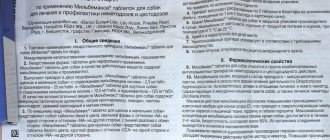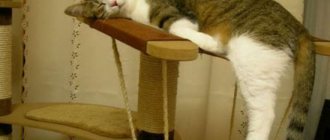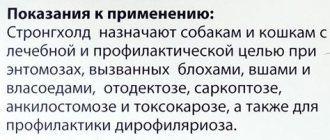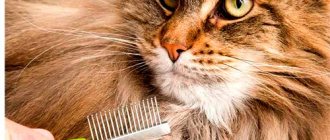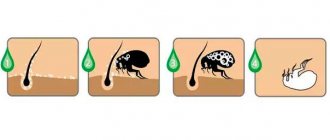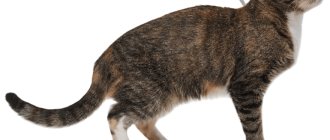Lack of stool is a fairly common problem in cats of all ages and breeds. To relieve a pet from the unpleasant and painful sensations of constipation, many owners use petroleum jelly. However, this simple and effective remedy has contraindications and side effects.
The required dosage and the correct technique for introducing the oil will allow you to achieve the goal and avoid undesirable consequences.
Mechanism of action
Vaseline oil is a clear liquid without a strong taste or smell. It is formed during the purification of hydrocarbons that remain after the production of kerosene.
The raw materials for the production of petroleum jelly undergo careful filtration. It is cleared of impurities. That is why the substance resembles water in its transparency. This drug has another name - liquid paraffin (named after the main active ingredient).
For several decades, this medicine has been actively used in veterinary medicine as a means of relieving constipation.
Vaseline oil is completely safe for cats. It does not penetrate the walls of the stomach and intestines and does not cause allergies. The substance leaves the cat's body unchanged. Thanks to all these properties, Vaseline oil can be used for kittens and adults.
Once in the animal’s body, the drug envelops the intestinal walls and penetrates into the feces. Under its influence, feces soften and become slippery. This way they leave the body easier and faster.
In addition to the laxative effect, petrolatum oil enhances intestinal motility and helps normalize stool.
How does it work?
If no serious pathologies are identified during examination by a veterinarian, the doctor may prescribe petroleum jelly. Due to the strong laxative effect, the veterinarian may choose a more gentle drug.
As for Vaseline oil, it is not absorbed by the body and has no side effects, being absolutely safe and hypoallergenic, provided that you give it to your cat correctly.
The product forms a kind of barrier between the intestinal walls and waste products. Due to this, the absorption of toxins and liquids by the intestines stops , which promotes their rapid removal from the body and softening of feces due to the liquid obtained from the digestion of food and the consumption of water by the animal.
Vaseline oil also helps improve the mechanism of intestinal motility and protects the mucous membrane from cracks.
Thanks to the oil, the intestines are freed not only from feces, but also from hairballs and other undigested foods.
Up
Indications for use
Healthy adult cats go to the toilet at least once a day. In older animals and newborn furry cats, intestinal motility is weak, so the risk of constipation is very high.
Vaseline oil should be given to your cat immediately if any of the symptoms of constipation appear:
- absence of stool for more than three days;
- lethargic, inactive or, conversely, too restless state;
- refusal to eat;
- nausea, vomiting;
- bloating;
- frequent but unsuccessful trips to the toilet;
- visible discomfort when trying to defecate;
- prolonged attempts in the tray.
Owners should be aware that prolonged constipation of a pet indicates a malfunction in the gastrointestinal tract. This increases the load on the liver, kidneys and heart. Feces, lingering in the body, begin to release toxins into the intestines. In advanced cases, this can lead to intoxication, intestinal rupture and even death of the cat.
In addition, the animal may need surgery in the future. After all, regular constipation causes intestinal injuries.
Why is constipation dangerous?
Constipation is extremely dangerous for an animal for a number of reasons. Even if we do not take into account the fact that they may indicate some more serious problems, they cause real harm to the cat’s body. The biggest danger is the accumulation of feces, which causes gradual intoxication with decay products. When the intestines rupture, everything happens even faster, and feces cause blood poisoning, which is almost impossible to cope with even with surgery.
How to give Vaseline oil to a cat
At home, Vaseline oil can be given to a cat with constipation:
- orally;
- rectally.
It is important! The result after oral administration of petroleum jelly to a cat with constipation will have to wait longer than with its rectal administration. However, the first method of use is 3 times more effective than giving an enema with medicine.
Inside
For constipation, Vaseline oil should be given to the cat in the morning, before meals, in order to monitor the animal’s condition throughout the day.
Since this liquid has no taste, your pet can lick it off himself. If the fluffy one refuses to try the medicine, it will have to be poured into the mouth with a syringe without a needle.
The course of treatment with Vaseline oil for constipation in cats should not exceed 5 days. With prolonged use, the body gets used to this product. The intestines gradually cease to empty themselves. As a result, constipation is becoming more common.
Dosage
It is very important for owners to know the optimal dosage of Vaseline oil, which will not harm the health of the pet and will help to obtain the desired effect.
The amount of Vaseline oil for a cat when administered orally is calculated as follows: 1 ml of liquid per 1 kg of pet’s weight for medicinal purposes and 0.5 ml for preventive purposes.
The total daily dose of the substance should not exceed 5 ml for a kitten, and 40 ml for an adult cat.
It is important! An overdose of Vaseline oil can cause diarrhea and dehydration in your cat.
Instructions for use of the drug orally:
- First you need to force the animal to swallow 10 ml of the product and wait about 3 hours until the intestines empty.
- If defecation does not occur after the time indicated above, give the pet another 5 ml of oil.
- If there is no stool, the cat needs to be given 5 ml of the drug again 1 hour after the second dose.
- Next, you should just wait for a bowel movement to occur. After all, this oil affects each animal differently: on some – after a couple of hours, and on others – after 10-12 hours.
- After the pet goes to the toilet, he is supposed to swallow another 2 ml of the drug.
- Over the next two days, it is necessary to give the cat 2 ml of the drug per day.
It is important! If your cat’s constipation still does not go away after taking Vaseline oil, you should immediately consult a veterinarian. Your pet may need surgery.
Side effects
If the laxative is used according to instructions, and not uncontrolled, there will be no side effects for your pet. If the dosage regimen is violated, the dose is exceeded, or if the drug is used frequently, undesirable consequences for the body are possible:
- the appearance of compactions inside the intestinal tract;
- continuous diarrhea;
- dehydration;
- weakening of the immune system due to lack of vitamins.
If, after the pet has swallowed the medicine, the cat experiences a gag reflex, loss of appetite, lethargy, apathy, or other alarming symptoms, you should stop using the drug and seek advice from a veterinary clinic. Perhaps the animal has an individual intolerance to the medication.
Infusion technique
When administered orally, Vaseline oil should be administered to the pet very carefully. During the procedure, the cat must stand or sit. It is forbidden to infuse the drug into an animal in a lying position. As a result of oil entering the respiratory tract, gas exchange will stop and the cat will suffocate.
How to give your pet Vaseline oil correctly and without bad consequences for your pet’s health:
- Before administration, you must first measure the required amount of the product and draw it into a syringe without a needle.
- The pet should be placed on a chair or lap (you can wrap it in a blanket or towel).
- While holding the cat's head firmly, you need to open its mouth. This will be easier if you insert your thumb and index finger behind her fangs and spread her jaws.
- The syringe with oil should be placed in the corner of the mouth, behind the fang.
- When administering the medicine, the cat's head must be raised up, but in no case thrown back.
- The drug should be poured in 1 ml at a time so that the pet has time to swallow it and not choke.
- After the oil has been completely introduced, the cat needs to cover its mouth. Otherwise, she will simply spit out the product.
- Finally, it is recommended to pat the pet’s throat to make it easier for him to swallow the remaining medication.
Enema
Some cats categorically refuse to swallow Vaseline oil: for some it causes vomiting, for others they simply do not like the taste. In such a situation, it is recommended to administer the drug rectally, using an enema.
This procedure is allowed for purrs of any age. True, to administer Vaseline oil to a kitten, it is better to use a pipette rather than a syringe.
Usually, with minor constipation, the effect of an enema occurs almost immediately. Complete cleansing of the intestines will occur approximately 30 minutes after the end of the procedure.
The maximum duration of treatment for rectal administration of the drug should not exceed 5 days.
It is important! If giving your pet an enema does not relieve constipation or black feces come out (one of the signs of intestinal bleeding), you should immediately take him to the doctor.
Quantity of product
Vaseline oil for performing an enema can be used either pure or diluted with water. To do this, pour warm water and medicine (in a ratio of 1:3) into the smallest syringe, and then shake thoroughly.
The amount administered depends on the age of the cat. Thus, for adults, the dosage of the drug in its pure form should not exceed 5-10 ml, in the form of a water-oil solution - 25 ml. For kittens to get rid of constipation, it will be enough to inject 1 ml of the substance in its pure form or 2 pipettes with a water-oil solution.
It is forbidden to give a cat more than two enemas per day. The break between procedures should be at least 5-6 hours.
It is important! Do not use too hot or cold water for an enema. This will cause discomfort to the pet.
Laxative for cats: the main thing
- The perceived benefit of using a laxative in a cat must be weighed against the risk of potential harm and complications;
- In case of constipation, first of all, you should remove the factor that provoked it, and only then give the cat a laxative;
- If symptoms of pain, rectal bleeding, accompanying vomiting, refusal to eat, or decreased activity occur, immediately seek veterinary help;
- Always remember that the symptoms of constipation and acute urinary retention may be similar.
Administration technique
This procedure must involve 2 people: one will hold the animal, and the second will administer the enema.
Instructions for owners for rectal administration of petroleum jelly:
- The tip of the medicine-filled bulb is lubricated with lubricant.
- The tip is carefully inserted into the cat's anus.
- Liquid is injected. This is done very slowly so as not to hurt the animal or injure the rectum.
- At the end of the administration of the medicine, the tip is carefully removed.
- At the end of the procedure, it is recommended to massage the cat’s stomach. This will improve intestinal motility and speed up the effect of the oil.
Use of coffee
Coffee with milk helps relieve constipation.
Drinking strong black coffee in the morning is a common habit not only in the West, but throughout the world. This is an excellent invigorating drink with a pleasant smell.
Caffeine is a natural stimulant for the digestive system - it not only improves intestinal motility, but also softens hard masses stuck in the colon.
In fact, many of us have noticed the urge to go to the toilet after drinking a cup of drink.
You need to drink only as much coffee as necessary for the therapeutic effect. In case of normal constipation, one cup of drink with added milk is enough. Don't overdo it, as coffee is a natural diuretic. The body will excrete excess water, thereby preventing the stool from softening.
This video will tell you how to get rid of constipation:
Contraindications and side effects
Vaseline oil is a fairly popular remedy for treating constipation in cats. However, there are a number of contraindications to its use. Therefore, it is recommended to consult a veterinarian first.
Contraindications to the use of petroleum jelly:
- chronic constipation;
- elevated temperature;
- pregnancy;
- gastrointestinal ulcers;
- individual intolerance to the drug;
- infectious diseases;
- blockage of the intestine by a foreign body with sharp edges or a tumor;
- various gastrointestinal pathologies;
- deworming carried out the day before;
- intestinal bleeding.
If the dosage is violated or the duration of administration is increased, the cat may develop side effects:
- diarrhea;
- nausea and vomiting;
- itching and irritation in the anal area;
- spontaneous release of feces due to decreased muscle tone of the intestines;
- exhaustion and hair loss from impaired absorption of vitamins and nutrients.
It is important! Some time after ingestion, petrolatum oil will begin to be released from the anus. It will contaminate the fur under the tail, so owners will have to wipe it off quite often with a cotton pad or bandage.
For the treatment and prevention of constipation, veterinarians recommend:
- Pay attention to food . If your pet has a predisposition to the disease, then you should use dry food marked i/d, designed specifically for cats with digestive problems and diseases of the gastrointestinal tract.
- Give more liquid . Make sure there is always water in the bowl. If your pet refuses to drink, read our material with an analysis of the reasons.
- It is undesirable to use a mixed type of food (industrial feed and food from the table), especially since most cats do not digest lactose.
- When treating constipation, it is advisable to replace dry food with wet food .
- Add fiber , which is found in plant-based foods. There is a special commercial cat food with high fiber content, Royal Canin Fiber Response, which is used to treat constipation.
- Regular massages of your pet's tummy.
- Use gentle laxatives : lactusan, duphalac, prelax, sodium sulfate. Medicines must be prescribed by a veterinarian.
If it is not possible to use one of the above methods using petroleum jelly, you can mix olive oil into your food in moderation.
It smells delicious, and animals willingly lick it off. The decision to take olive oil should also be discussed with your veterinarian. Up
Bimin is a laxative based on petroleum jelly.
As an analogue of petroleum jelly, doctors often prescribe Bimin, a veterinary laxative. It can be used for both preventive and therapeutic purposes.
Bimin is an oily liquid without color, taste or smell, which is intended for oral administration. This drug contains natural ingredients. The product does not cause allergies.
This medicine is not painful for cats. It has a mild laxative effect. The drug normalizes the functioning of the gastrointestinal tract and helps to remove solid feces, small foreign objects, and balls of hair from the intestines.
According to the instructions, Bimin should be given to cats once before morning feeding in the following dosage: 1 ml per 1 kg of body weight (for therapeutic purposes) and 0.5 ml per 1 kg of body weight (as a prevention of constipation). For kittens that weigh 1 kg or less, 1-3 drops of this medicine are dripped onto the head.
If the dosage is followed, there are no side effects from using Bimin. This drug is safe even if you accidentally exceed the prescribed dose by three times.
The only contraindications to the use of this medicine are individual intolerance to its components and intestinal blockage.
Benefits of using Vaseline
The product has no smell or taste, so the animal will not especially resist its use and try to spit out the remaining product from the mouth. An enema, of course, is the most effective method of treating constipation, but using it on cats is quite problematic. One person is unlikely to cope with the task.
Treating constipation with an enema is an extremely unpleasant and uncomfortable procedure. For a pet, such manipulation will become very stressful, which will lead to aggravation of an already serious condition.
Aloe as a laxative
Aloe leaves are known to relieve inflammation and promote healing of minor wounds and burns. In fact, the leaves of this plant are also effective in cases of constipation.
It is best to use the plant in oil or gel form, but you can try making a remedy from the juice. Remember that aloe oil contains a high concentration of active substances. You will need:
- Two tablespoons of pure aloe oil or one glass of plant juice.
- You need to mix two tablespoons of oil with fruit juice and drink the finished product in the morning on an empty stomach. The products can be taken twice a day for a week.
More plant fibers
When doctors talk about natural ways to relieve constipation, they mean a diet rich in fiber and other fibers.
A proper diet solves almost any bowel problem. In addition, our digestive system copes much better with fruits, vegetables and grains than with artificial foods and delicacies. It's all about the same fiber that travels through the intestines along with other foods, but is not digested.
Fiber is a polysaccharide, like starch. The structure of this substance cannot be digested in our body; it has other purposes. This fiber penetrates the thickness of the stool, helping to form healthy stools.
Only some bacteria in the large intestine are able to digest fiber, but they can only handle 15-20% of the substance. If there is not enough fiber in the diet, the stool can become hard and linger in the intestines. Fiber-rich foods:
- Beans and other legumes.
- Apricots.
- Whole grain bread.
- Berries.
- Broccoli.
- Nectarines, pears and apples.
- Nuts.
- Potato.
But, as with caffeine, you shouldn't get too carried away with fiber. Pathogenic intestinal flora uses dietary fiber as a food product. Excessive fiber consumption often leads to dysbiosis.


